The Tragic and Inspiring Story of the ‘Queen of Thai Desserts’
From countess to political prisoner to palace chef, Maria Guyomar de Pinha lived a life fit for the screen.
“It’s just crazy–it’s a crazy story,” says Thai cookbook writer and journalist Chawadee Nualkhair. “And apparently it’s true! Or, that’s what we all believe.” She’s referring to the tumultuous life of Maria Guyomar de Pinha (1664–1728), known in Thailand as Thao Thong Kip Ma and sometimes called “the Queen of Thai Desserts.” In the Siamese court of the late 17th century, Guyomar experienced a meteoric rise followed by an equally dramatic fall, and Thai cuisine would never be the same.
In present-day Thailand, Nualkhair explains, Guyomar’s reputation has become so exaggerated that “everything that’s vaguely Portuguese-inspired is attributed to her;” even the curry puffs served at Thai restaurants across the world. Portugal was the first European nation to establish a colony in Southeast Asia. As trade flourished and populations mingled, Portuguese influence crept into many Asian cuisines, from Macanese egg tarts to Japanese tempura. What makes Thailand unique is not that Portuguese-inspired dishes exist there, but that they’re all said to have been invented by one woman.
Some of these claims are spurious. Guyomar is unlikely to have invented ho mok, fish curry steamed in a banana leaf cup, which is found across Southeast Asia. Claims that she invented desserts from Thai royal court cuisine like sangkhaya fak thong, which combines native Thai coconut with a Portuguese-style custard and pumpkin (also introduced by the Portuguese), are considered more credible. Guyomar exerted a unique influence as overseer of the royal kitchens for more than 25 years. How she ended up in those kitchens is a remarkable tale, recounted by both European and Thai historians.

Guyomar was born in 1664, in Ayutthaya, Thailand, then the capital of the Kingdom of Siam. At the time, Ayutthaya was a huge and bustling city with a diverse population of merchants and migrants; one European visitor in 1684 called it “the metropolis of the whole world.” Alan Strathern, a professor of history at Brasenose College in England, says that the kings of Siam “adopted a deliberate policy of attracting and patronizing foreign groups.” In addition to bringing trade, foreigners were desirable as royal bodyguards and advisors because they lacked ties to local nobility who might undermine the king’s power.
Seventeenth-century Ayutthaya’s multiculturalism is strikingly apparent from Guyomar’s family history: She had Bengali and Portuguese heritage, and was descended from Japanese Catholics who had fled religious persecution in Japan to settle in Ayutthaya’s Ban Yipun or “Japanese Village.” In 1682, Guyomar married Constantine Phaulkon, who converted to Catholicism at her family’s request. Described by Nualkhair as a “dashing Greek adventurer,” Phaulkon had traveled the world as a merchant with the English East India Company. In Siam, his knowledge of several Asian and European languages allowed him to become an interpreter and eventually a trusted advisor for King Narai the Great.
This made Phaulkon and Guyomar wealthy and powerful, but placed them at odds with traditionalists who resented the growing influence of foreigners. Above all, Strathern explains, the Buddhist Siamese establishment feared “that Narai might become Christian, or that his successor would become a Christian.” Phaulkon, whom Strathern calls “the spider at the center of the web of all this diplomacy,” used rumors of the king’s imminent conversion to help Narai secure relations with Europe. Catholic France responded especially well to the Catholic couple they knew as “Monsieur and Madame Constance,” even awarding French citizenship and noble titles to Guyomar and Phaulkon. Over the next few years, Guyomar gave birth to two sons and her family rose ever higher in Narai’s favor.
Unfortunately, it was all about to come crashing down.

In the late 1680s, Strathern says, Europeans considered the “extraordinarily cosmopolitan” Siamese society “a wonderful example of tolerance;” that is, until 1688, when underlying tensions came to a head. After King Narai unexpectedly took ill and died, Narai’s traditionalist cousin Phetracha seized the throne and had Phaulkon executed. Phetracha’s supporters then turned on the French with the intention of driving them from Siam, events known as the Rebellion of 1688. Guyomar was placed under house arrest, but she and one of her sons managed to escape to the French encampment in Bangkok. Phetracha offered to release French hostages in his custody in exchange for Guyomar—an offer which the French, under siege from Phetracha’s troops and anxious to depart, decided to accept. An anonymous contemporary French account describes the moment “Madame Constance” realized she had been betrayed:
[The French commander] sent his chief-of-staff to inform her that she absolutely must be ready to leave immediately the stronghold, and if she refused four sergeants would be charged with carrying her out, holding her arms and legs. This lady, carried away by indignation and despair at seeing herself thus sold and robbed, said that she had never expected anything less from the general, since he had so treacherously abandoned her husband, and the detachment of four sergeants was to no purpose.
According to the same source, Guyomar’s final words to her betrayers were to ask them to tell their king how they had gone against his wishes by failing to protect her family. She was conveyed back to Ayutthaya, where Phetracha forced her to work in the palace kitchens. Nualkhair describes how Thais salute Guyomar for having “bravely served” in the kitchens of her enemy for the next 15 years. Though technically enslaved, she rose in the ranks over time to become chief kitchen overseer. Her sons also remained captives of the king, but eventually rose to high positions at court, just as their father had.
Once Phetracha died and his son became king in 1703, the political climate in Siam became receptive to foreign influence again. Strathern describes the Rebellion of 1688 as “a kind of freak explosion” in the history of Thailand’s foreign relations, due to the anxieties around Narai’s rumored conversion. “Once there isn’t an immediate threat to Buddhism, we find Buddhist monks going back to having very easy relations with Christian missionaries,” he says. After Phetracha, the kings of Siam readopted Narai’s attitude of “‘Let’s make money, let’s make friends’” with foreigners, says Nualkhair, which she calls “the real tradition of Thailand’s approach to the outside world.” She adds that Phetracha, in addition to being known as “the Usurper” in modern Thailand, is more famous as the king who imprisoned Guyomar than for his own accomplishments.

Guyomar was freed upon Phetracha’s death, but continued in her role as head of the royal kitchens until her own death in 1728 at the age of 64. She is said to have created her famous desserts during this time. Nualkhair describes how Guyomar drew on the traditions of her Portuguese diaspora community and “adapted them to Thai ingredients and Thai cooking methods.” As an example, Nualkhair cites phanom kui fai: paper-wrapped cakes that resemble Western cupcakes, but are steamed rather than baked, since enclosed ovens would have been a rarity in early modern Thailand.
The prominent use of egg yolks in many of the Thai desserts associated with Maria Guyomar also derives from Portuguese technique. A long tradition in Portugal of rich, golden-yellow sweets made with egg yolks has produced dishes like rolled, syrupy trouxas de ovos (“egg bundles”) and seashell-shaped ovos moles de Aveiro (“soft eggs of Aveiro”). These are said to have originated with Catholic nuns, who used egg whites to starch their habits and devised recipes with the yolks so as not to waste them. In Thailand, the influence of these yolky Portuguese confections is especially apparent in the “Nine Auspicious Desserts,” which are served for occasions such as weddings because their golden color represents good fortune and wealth. Pinched thong yip (“picking up gold”), and beadlike thong yot (“golden droplets”) look similar to specific Portuguese dishes, but the resemblance is even more apparent in foi thong (“golden threads”), which consists of hairlike strands of yolk cooked in sugar syrup. Portuguese fios de ovos (“egg threads”) is almost identical, except that foi thong has longer strands and is flavored with Southeast Asian pandan leaves instead of vanilla. “That’s the only thing that Thais really haven’t altered at all,” says Nualkhair. “I guess everybody likes egg yolks and sugar.”
The exquisite desserts that Guyomar became known for were shaped not only by her multicultural background, but by palace dining customs. In the Siamese court during Guyomar’s lifetime, “royal protocol was more highly-elaborated possibly than anywhere else in the world,” says Strathern, and these strict rules of etiquette extended to the dinner table. Simon de la Loubère, one of the French diplomats who fled Ayutthaya in 1688, noted that Siamese royals ate basically the same diet as commoners, but these dishes were presented in highly elaborate and refined ways. Fruits were carved into intricate flowers, and all bones, peels, and pits were removed from dishes before serving so that everything on the plate was edible. Furthermore, as the palace was the first point of contact with the outside world, it was there that Western influences first entered Thai cuisine. The increased availability of cane sugar through trade, and the originally European custom of serving sweets after a meal, also influenced Guyomar’s creations.

Over the centuries, Guyomar’s recipes and other dishes originating in the royal court were disseminated to the public through the extended families of court members, especially after Thailand became a constitutional monarchy in 1932. Nualkhair explains that Guyomar became well-known to the Baby Boomer generation during the establishment of modern Thailand, a period “obsessed with forming some sort of national identity, and defining what being Thai means.” In 2018 and 2023, Guyomar and Phaulkon were introduced to a younger generation of Thais through the live-action historical series Love Destiny and its sequel, which cover the Rebellion of 1688 and its aftermath. The latest dramatized portrayal comes at a time when Guyomar’s traditional sweets, with their light, palate-cleansing flavors and unique mixtures of ingredients, are declining in popularity, thanks to what Nualkhair calls “the globalization of the palate.” But as tastes in Thailand continue to change, Guyomar’s story continues to inspire.
“It’s not Thai food if it’s not always changing and evolving,” says Nualkhair. “And Maria Guyomar is part of that tradition, and is a total illustration of why that is true.” Nualkhair considers Guyomar just one in a long list of examples of the Thai genius for taking foods from other countries and transforming them into something uniquely their own. She recounts a friend’s story of traveling to Portugal with a group of Thai tourists and encountering egg yolk desserts there. “They looked in a pastry window, and they were like, ‘Oh, my God, they have Thai food!’”
Gastro Obscura covers the world’s most wondrous food and drink.
Sign up for our email, delivered twice a week.



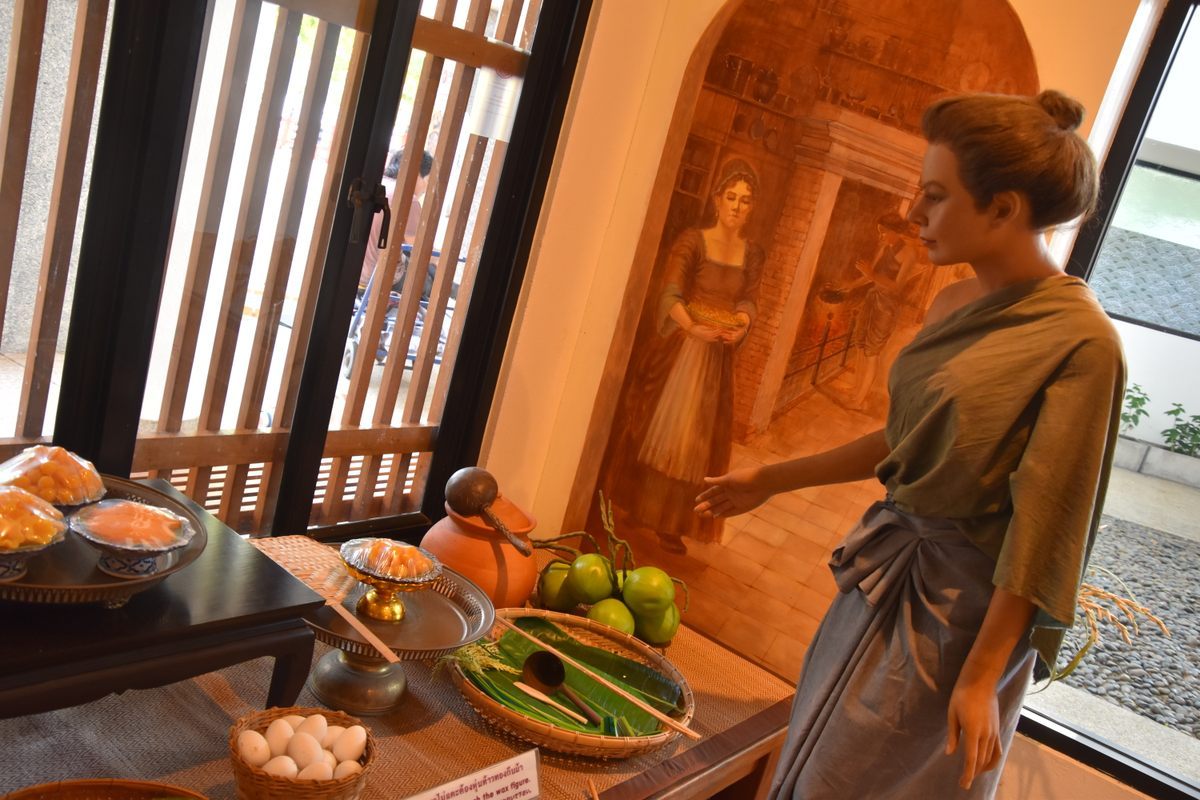
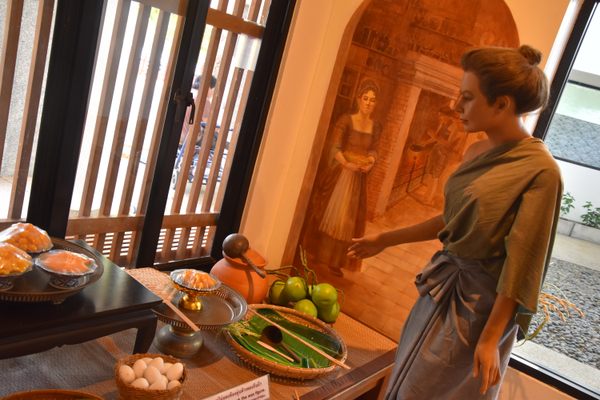



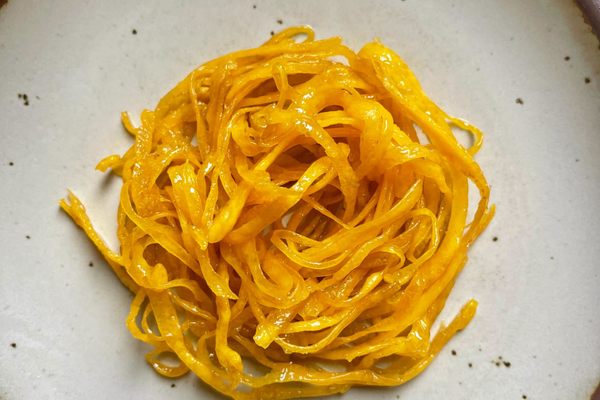
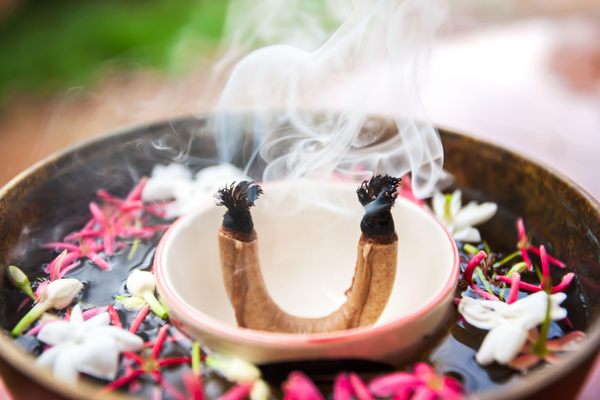

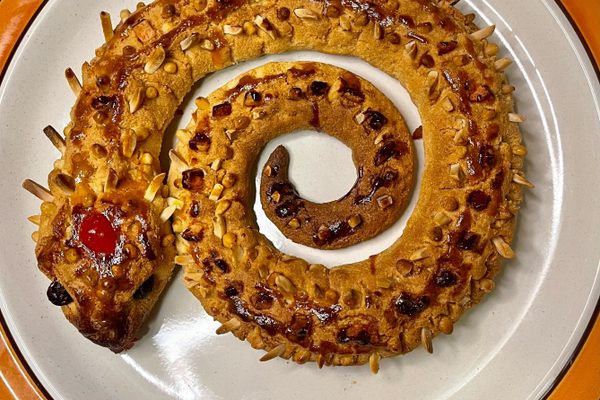









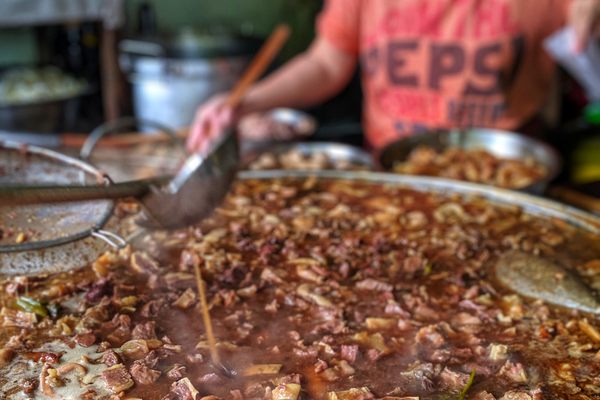
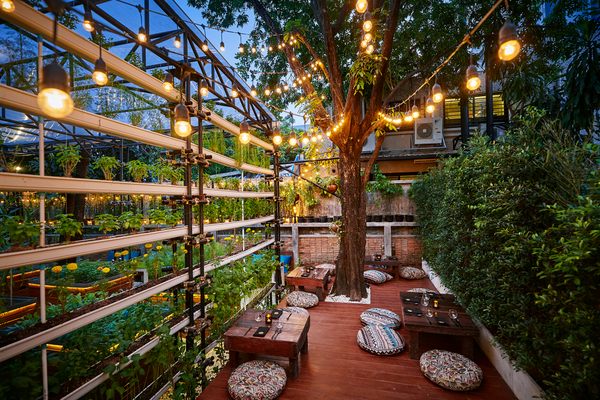






Follow us on Twitter to get the latest on the world's hidden wonders.
Like us on Facebook to get the latest on the world's hidden wonders.
Follow us on Twitter Like us on Facebook